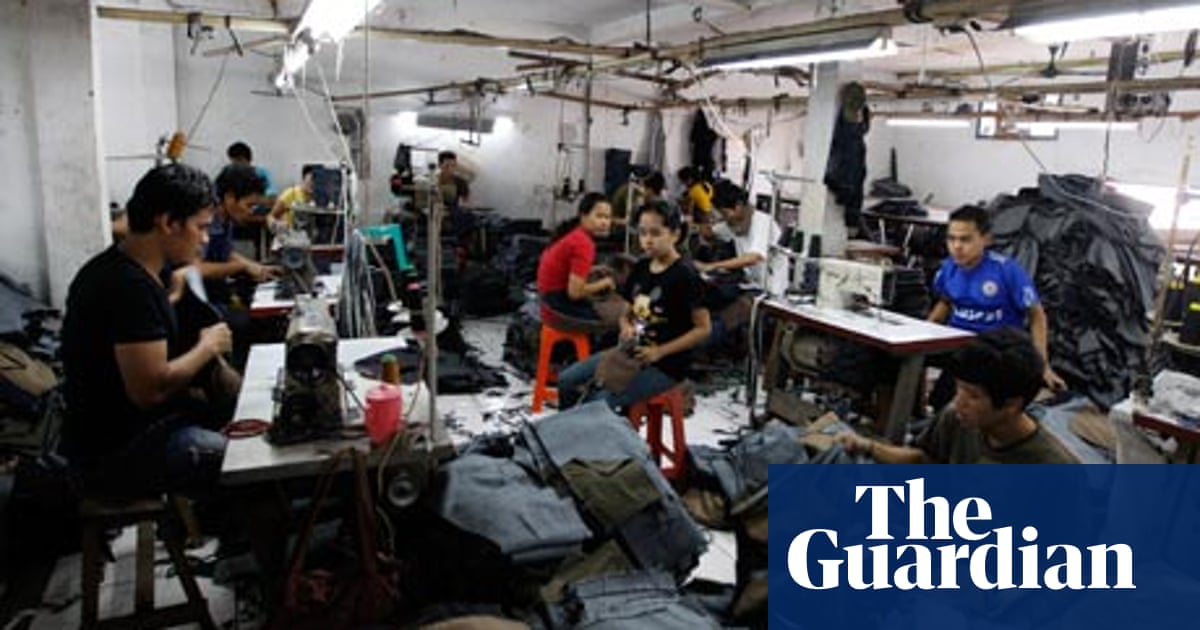
Some of the common sweatshop conditions include pay that is below minimum wage excessive working hours a dangerous working environment and conditions that create and foster health problems. Sweatshop workplace in which workers are employed at low wages and under unhealthy or oppressive conditions.

These poor working conditions typically target workers who are not able to obtain employment in traditional work environments.
Working conditions in a sweatshop. Sweatshop workers conditions - It can be really bad In the worst forms of sweatshops people are forced to work up to 72 hours straight without sleep. Those complaining are beaten and abused. Cases of physical sexual and verbal abuse are common and well documented.
Even back then sweatshops were already known to have poor working conditions with factories being overcrowded workers being paid extremely low wages and children as young as 14 being put to work. Some of the common sweatshop conditions include pay that is below minimum wage excessive working hours a dangerous working environment and conditions that create and foster health problems. These poor working conditions typically target workers who are not able to obtain employment in traditional work environments.
Though sweatshops have unfavorable working condition and the employees are paid less the sweatshops provide a means for the low class people to earn a living. Sweatshop conditions are usually in manufacturers and companies with unfair risky and dirty working environment. These conditions exploit workers who cannot afford employment in a good environment.
In fact working conditions for 80 percent of sweatshop workers violate both local and international labor laws. Even in the United States there are over 11000 sweatshops as of 2000 that break both overtime and minimum wage laws. Even more violate health and safety conditions.
Some employees are forced to work up to 72 hours straight with factory doors locked. It is common for. Sweatshops are defined by telling conditions.
The workplace setting is cramped with workers in order to maximize production. The modern sweatshop does not have to be inside of a building. In the agricultural industry where many immigrants are employed working conditions include all day hours under hot sunshine with wages that may be below the minimum wage.
The problem with sweatshops is this. Those who work in them typically have no other option because of their current life circumstances. So here are the cons and PROS of sweatshops on individuals that should enlighten you.
Poor working conditions. Exposure to harsh chemicals sometimes. Sexual and physical abuse of workers.
On the line we sometimes work on top of each other touching the same equipment. They give us a mask and take our temps when we walk in. The bathrooms arent always clean and are small.
Sweatshops often have poor working conditions unfair wages unreasonable hours child labor and a lack of benefits for workers. Take a stand and protest. Ask your school to make its apparel under fair conditions.
Sign up for Tighty Whitey Rally. A Canadian journalist working undercover in a Bangladeshi sweatshop has revealed details of the back-breaking work and appalling conditions children as. Sweatshop workplace in which workers are employed at low wages and under unhealthy or oppressive conditions.
In England the word sweater was used as early as 1850 to describe an employer who exacted monotonous work for very low wages. Sweating became widespread in the 1880s when immigrants from eastern and southern. These companies hire large teams of people often working in sweatshop-like conditions for very little pay to play Guild Wars for many hours a day in order to rake in gold and items.
As well as earning a pittance Bangladeshi factory workers face appalling conditions. Many are forced to work 14-16 hours a day seven days a week with some workers finishing at 3am only to start again the same morning at 730am. On top of this workers face unsafe cramped and hazardous conditions which often lead to work injuries and factory fires.
Since 1990 more than 400 workers.